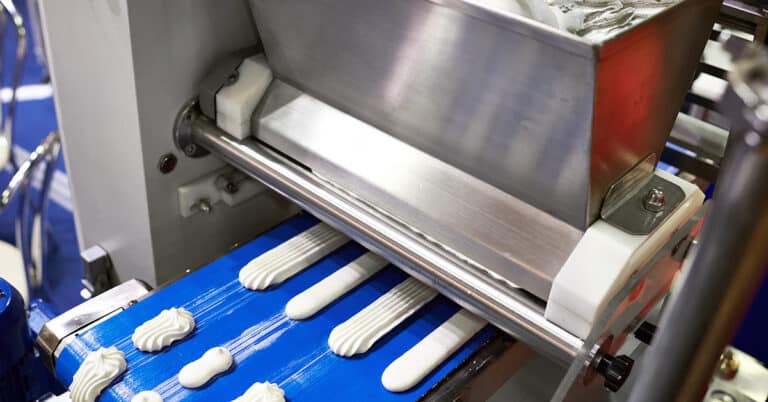Manufacturing processes should be in a state of constant evolution, becoming ever more efficient as waste is driven out. Product upgrades are another change driver, requiring process alterations for new and improved features, and safety and maintenance concerns can prompt yet more changes.
Making changes to established, and often customer-approved, processes is fraught with risk. Change management in manufacturing is about minimizing the chances of something going wrong when a process is altered. This blog explores manufacturing change management. It looks at why it matters and the benefits of doing it well. It discusses some proven change management best practices and discusses the potential use of digital technologies.
What is change management in manufacturing?
Improvement suggestions are valuable, but implementing them should never be left to chance or the initiative of someone with a good idea. Manufacturing processes are complex, and a change made with the best of intentions could have unforeseen consequences. These might include quality defects that result in warranty claims, more frequent breakdowns or even product contamination.
To avoid this, every factory needs a manufacturing change management process. This is a formal, structured approach to requesting, reviewing and implementing changes. It begins with a change request, which could be raised by manufacturing, engineering, quality or maintenance, and ends when the new or updated standard operating procedure (SOP), is adopted.
Change requests and change orders are the key documents in a manufacturing change management process. Examples of why a request might be raised include:
- Someone in production has an idea that will save them time
- Switching to a different conveyor belt material will extend time between failures and save on industrial maintenance work
- A kaizen event has identified that changing the order of operations will reduce handling work
- Quality adjustments advise extending the drying time of a coating in order to reduce warranty claims
- Engineering has been notified that one of the components used in the product is going end-of-life and they need to switch to an alternative
Every request needs to go through a thorough review where stakeholders are invited to comment. This should result in concerns being identified and, most likely, testing being required. If test results are satisfactory the change is ready to be implemented. This typically requires some form of change order, which sets in motion the relevant changes and notifications needed.
The importance of change management
The most important reason for operating a manufacturing change management process is to avoid unintended consequences. The benefits are:
- Safe working conditions: Careful review by maintenance and safety ensures no potentially hazardous equipment modifications are made.
- Cost reductions: A change management process provides a structured way of proposing and implementing improvements. Manufacturing operations become more efficient and productive and waste is reduced or avoided.
- Communication: The proposed change is shared with all the stakeholders, giving them an opportunity to raise any concerns or highlight potential risks. For example, a proposed alteration to machine guarding that will reduce unloading time should be reviewed by safety and will need maintenance to advise on the work involved in making the alterations.
- Risk elimination: A formal process ensures risks are assessed, tests conducted as needed, and that all possible consequences are identified and evaluated.
- Documentation: Once the change is accepted SOPs must be updated. The release of these is usually the signal that the change is live.
- Education: Those affected by the change, for example, line workers and maintenance technicians, must be told about it and taught what they need to do differently.
Manufacturing change management best practices
There is no single “best” process: Every manufacturing organization needs to develop one that works for them. However, some best practices do stand out for change management in the manufacturing industry:
- SOPs are essential: SOPs provide a standardized way of working, and audits test compliance. When a change is implemented, this must be done via the SOP to ensure it sticks.
- A defined request system: It’s vital that a change request goes to everyone with a stake in manufacturing, which is something only a standardized system can ensure. Without this, valuable input from functions such as maintenance and quality will likely be overlooked.
- Risk management: When stakeholders review change requests, they must identify potential problems and consequences. This should trigger further analysis and testing if the request is to move forward. Failing to assess risks invites unintended consequences.
- Communications and training: An effective system keeps all stakeholders in the loop regarding the proposal and its implementation status. It also initiates education in the change and any training that may be necessary. To give an example, a machine modification that simplifies unloading may require maintenance technicians to gain access from a different direction to replace a filter.
- Implementation: There must be a defined date when the change goes live, with everyone affected understanding what they need to do differently. Documentation of the implementation is also needed in case of any follow-up, for example, in case of customer returns that can be traced back to the change.
Utilizing technology for change management in manufacturing
An effective change management process involves multiple functions within an organization and needs good documentation. This can slow down the review, testing and implementation of improvements. The solution is to use the new digital technologies that are emerging, such as:
- Connected worker programs: These put tablets containing SOPs and other instructions in the hands of line workers and enable rapid communication of changes.
- CMMS: Many ideas for improving production processes need input from maintenance. The computerized maintenance management system (CMMS) provides a visible way to manage and follow up on change orders.
- Industry 4.0 technology: When production equipment is instrumented with advanced sensors and communications capabilities, process changes can often be implemented faster and their impact quickly measured.
Implementation needs communication
Improving efficiency, productivity and safety means making alterations to manufacturing processes. Engineering changes, such as different materials or components, can also ripple through to production equipment. These changes must be evaluated and implemented in a controlled manner where all stakeholders are consulted and consequences considered.
The factory maintenance function plays a large role in making manufacturing improvements and should be part of the process. Digital technology can improve communication and accelerate the implementation of improvements, but communication across functions will always be a vital part of change management.
As a pioneer in the field of outsourced industrial maintenance, ATS helps manufacturers implement change management and other manufacturing improvements. Contact us for more information.






